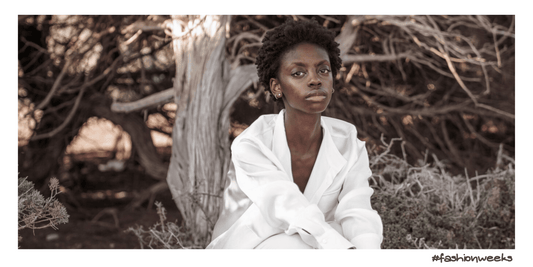It was during a call that my-then-NGO-partner and I had with Nasreen Sheikh, almost 5 years ago. Back then, of course, I didn’t know that this would become one of the most important calls I ever had. Anyhow, I remember Nasreen telling us that she was at that moment in the US, as a part of the American branch of Fashion Revolution. My immediate reaction was: “A fashion what?”
Expanding the movement

Like all revolutions, Fashion Revolution is a sign of the culminating works of critical thinkers, academics, designers, activists, and organisations. In particular, non-profits, such as the Clean Clothes Campaign, War on Want, Better Work, Fair Wear Foundation, Labour Behind the Label, and many others paved the road before them. These non-profits have been raising awareness about the “behind-the-scenes” of the fashion industry for years, if not decades. Because the human rights issues we’re seeing in the fashion industry aren’t anything new. Unfortunately, the history of the modern fashion industry is a history of inequalities.
The Fashion Revolution, as an organization, was born in one of the darkest moments of that history. On 24 April 2013, The Rana Plaza factory in Bangladesh collapsed, killing 1.138 people and injuring many more. Up to this date, this is the worst recorded accident in the history of fashion, though far from the last one. Just earlier this year, we saw a deadly garment factory fire in Egypt. However, the Rana Plaza catastrophe mobilised people and the global movement was started. What sets Fashion Revolution apart from other movements, and perhaps is the reason it’s so popular and influential today, is that they relied on connections across the industry, domains, countries, and languages, right from the start. They also fully embraced the potential of social media, and their (still trending) hashtag, #WhoMadeMyClothes, became a tool to bridge the gap between activists, industry professionals, and consumers.
Going beyond the organization

Before writing this blog post, I engaged in conversations with different small brands and sustainability advocates, around the meaning and significance of the Fashion Revolution (as an organization or as a movement). If you’re reading this, and you were in conversation with me about this topic, thank you! I truly appreciate hearing diverse voices!
Some described it to be a mindset shift away from consumerism. Some emphasized the value of transparency in the supply chain as a standard of future fashion. Others thought of fair pay for everyone or reducing the environmental footprint our clothes have. I also heard about making people aware that our clothes have a story to tell, as well as moving towards a collaborative industry.
I have to say, I don’t know which one I agree more with. For me, these are signs of the fact that the industry has to and also is changing in multiple ways, simultaneously and deeply. We all play a part in this because our clothes connect us across the world.
So, tell us: what does Fashion Revolution mean to you?
About Tena:




